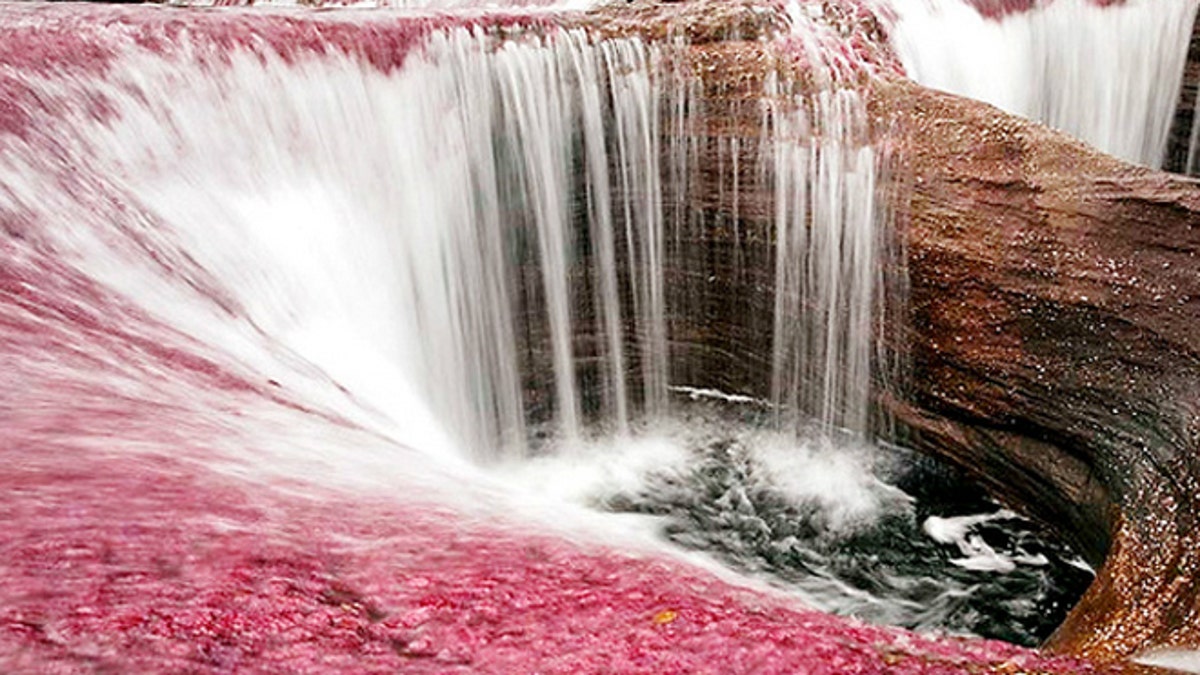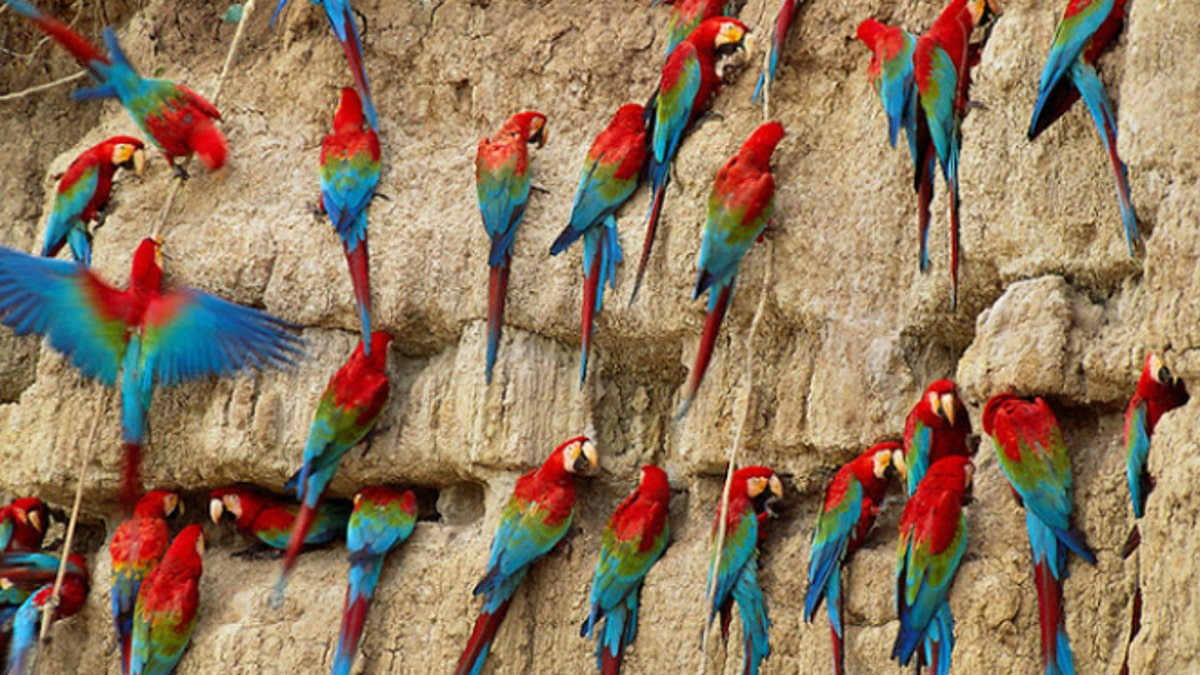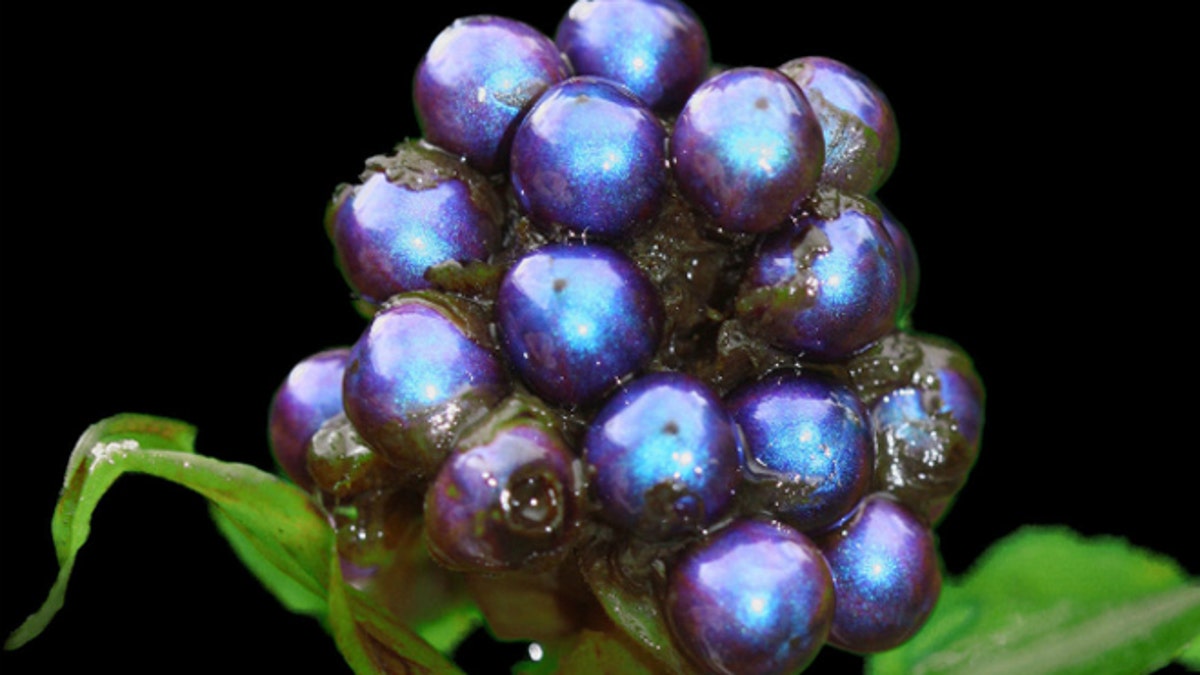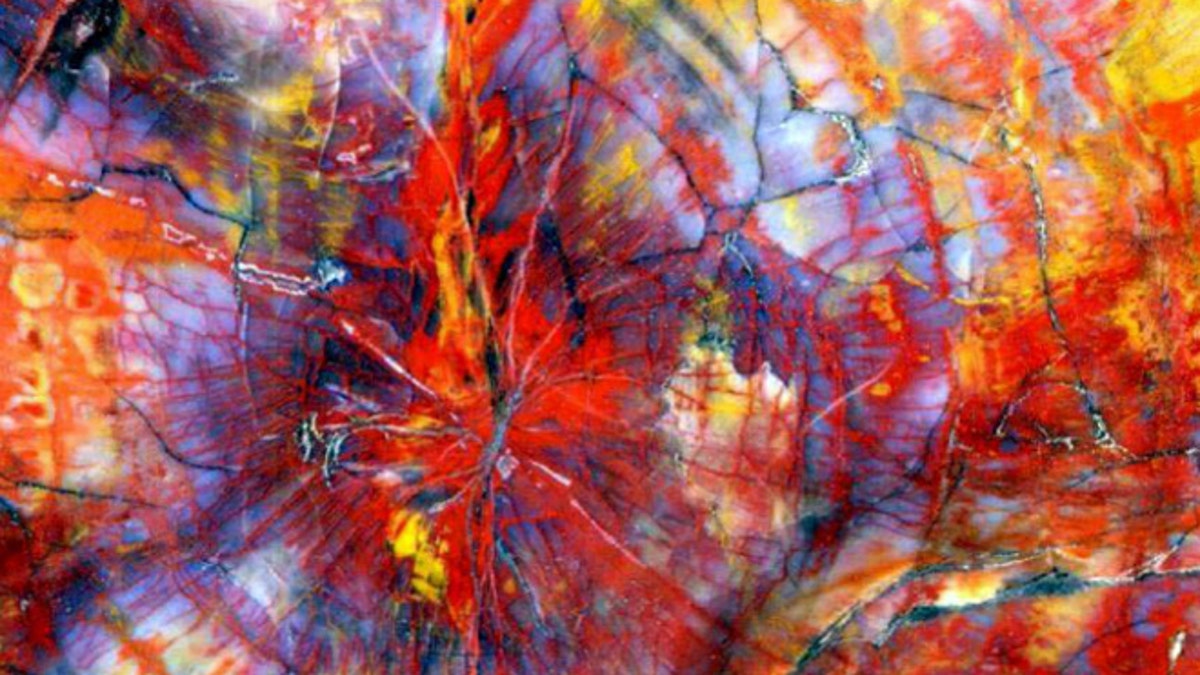When images of China's "rainbow mountains” went viral, we—like so many others—were entranced by the incredible colors of nature.
But then we noticed the disclaimer: “There could be some slight photo manipulation going on to make the colors pop.” After a little research, we realized this was definitely the case (compare the previous shots to these photos).
Still, we had been inspired and were determined to find the most jaw-dropping displays of color Mother Nature had to offer. After fishing around, we realized that not only is the natural world full of neon and jewel-toned hues, but also got a crash course in how these displays came to exist.
Of course, these incredible hues aren't just for aesthetics. You might recall the classic case of color in the animal kingdom: the male peacock, whose beautiful feathers are used to attract females. Still, animals use myriad shades for many other reasons, too. While cuttlefish change color rapidly to avoid predators and orange oak leaf butterflies are permanently camouflaged to blend into their habitat, other animals such as the cinnabar moth caterpillar and poison arrow frog flaunt bright shades as a warning sign to other creatures.
Plant species also put their colors to work, using their unique pigments to attract pollinators. Some species—such as plants in the phlox family–even change their hues based on which animals are present during a given time. For instance, researchers from Northern Arizona University in Flagstaff found that the scarlet gilia shifted its shade of red to attract moths in one season and hummingbirds in another.
In animals, plants or natural features, vibrant colors can come from a variety of sources—their diet, minerals, bacteria, cellular structure, or simply a genetic ability to create a unique (and sometimes changing) display of pigmentation.
But even if the real story behind these brilliant hues is biological (that’s right—Mother Nature doesn’t flaunt her colors just for humans to enjoy), we can still seek out incredible displays for the joy, wonder and reverence they inspire. Take a look through our slideshow to see some of the most amazing shows of color in the natural world.

(Rachel Cifelli)
1. Caño Cristales: Meta, Colombia
Known as "The River of Five Colors" or "The Liquid Rainbow," this South American landmark in Serrania de la Macarena National Park shows its brilliant hues between the wet and dry seasons every year. At this time, a unique plant species on the river floor called Macarenia clavigera turns a brilliant red. Against the blue water and yellow and green sand, it's an incredible sight to behold. Although the area was closed for many years due to guerilla activity, it reopened to tourists in 2009. Today, several Colombian tourism agencies will arrange guided tours to the remote area, complete with the flight to La Macarena.
2. Valley of Flowers National Park: Uttarakhand, India
Picture this: It's early morning as you make your way through a Himalayan meadow where orchids, poppies, primulas, marigold, daisies and countless other wildflowers carpet the ground. In the distance, you hear the call of a Himalayan Mona Pheasant and, as you pause to soak in the scenery, you glance down and notice a pair of footprints in the loose dirt. A snow leopard walked this same path just hours earlier. Welcome to Valley of Flowers National Park, a location known for its rich diversity of endemic alpine flowers and as a home to numerous endangered plant and animal species.

(Wikimedia Commons)
3. Lake Hillier: Recherche Archipelago, Western Australia
While Lake Hillier appears bubble gum-colored from the air, the waters show a less dramatic pink hue when viewed from the shore. No one is sure where the color comes from, but scientists have several good guesses. As with other pink salt lakes in the region, the color could originate from the organisms Dunaliella salina and Halobacteria. Alternatively, its color could be due to halophilic bacteria that live in Hillier's salt crusts. Either way, the lake is safe for swimming, so visitors can enjoy a dip in its unique waters.

(Daniel Blanco/Surbound Expeditions)
4. Parrot Gathering: Tambopata, Peru
Every day, scores of macaws, parrots, parakeets and other colorful bird species gather near Tambopata, Peru at dawn to feast on the area's mineral-rich clay licks. Numerous companies offer tours to this incredible area.

(Silvia Vignolini et al via PNAS)
5. The Marble Berry: Africa
The marble berry (Pollia condensata) has the most intense and shiny color known in nature. Found in forested regions of Africa, the berry's hue is caused by Bragg reflection from its unique cellular strucure, which can also cause the fruit to appear somewhat pixelated to the human eye. Although beautiful to look at, these berries contain no nutritional content.

(Carvalho)
6. Rainbow Eucalyptus: Throughout the Northern Hemisphere
The colors of the Rainbow Eucalyptus appear as the brownish-grey outer bark peels away each year. The bright green inner bark then turns blue, purple, orange and maroon as it matures. These fast-growing trees are common on tree plantations around the world. In the Phillippines, the Rainbow Eucalyptus is the species most commonly grown for pulpwood.

(T. Scott Williams/NPS)
7. Petrified Wood: Petrified Forest National Park, Arizona
This national park is known for its large deposits of petrified wood found over approximately 146 square miles. The colors of these fossils depend on the elements in the water or mud during the petrification process. For instance, the presence of manganese can create pink or orange hues, while cobalt will result in greens or blues.
See all 13 colorful natural wonders at The Active Times
More from The Active Times
22 Awe-Inspiring National Park Photographs
11 Best New Fitness Tech Gadgets
